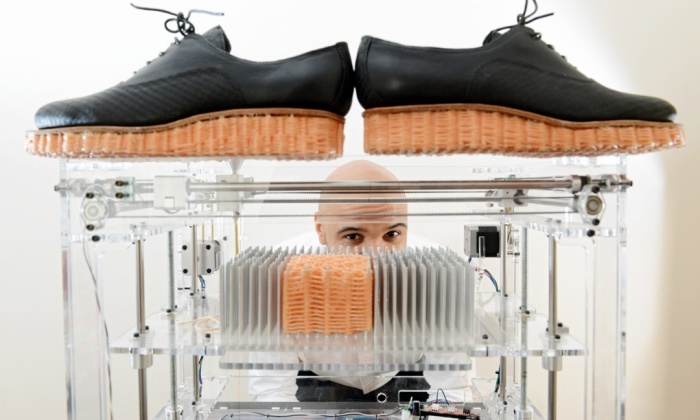London-based designer Oluwaseyi Sosanya has already made a name for himself in the 3D printing world by quite literally “interweaving” 3D technology with “warp and weft” weaving craft. The Royal College of Arts and Imperial College London graduate announced back in June that he had invented a 3D weaving machine after extensively studying traditional and industrial weaving techniques. Now, the designer has even bigger plans. In a recent interview with The Guardian, the inventor hinted at the use of his 3D Weaver to create bulletproof vests and buildings.
Sosanya explains his original interest in weaving to The Guardian, “we’ve been using the same sort of weaving techniques for thousands of years. This shirt that I am wearing right now is woven in the same way as a shirt that was made 3,000 years ago,” the designer says. Why not apply ancient techniques to an emerging technology and see what happens? Sosanya consulted expert weavers at several English textile mills to help him gain a greater understanding of the weaving process. Fusing what he learned with his mechanical engineering and computer programming background, he created his hybrid machine. Part sewing machine, part industrial knitting machine, part 3D printer, Sosanya’s machine is as innovative as it is ancient.

With this system you can pre-program the density. At the ball of your foot, you may want a denser material. Right at the arch of your foot, you might want a softer material. At the heel, you might want a denser material. The current method for doing that is using different densities of foam, cutting them up, getting a specialist to layer and gluing them on top of each other and making these custom insoles by hand which are really expensive. I could press a button on a machine after an algorithm which runs over the ball of your foot and the underside of your foot which tells me the where the densities and the stresses are and it is done in one go.
Moreover, because the objects created by this process are both flexible and strong, the 3D Weaver could be used to create protective athletic wear and bulletproof vests, he tells The Guardian. Sosanya elaborates, “Pretty much everyone [sports companies] has a neoprene on the inside – a nice soft stretchy material on the inside – then layers of foam and then a woven on top, which is very good for not deforming and then a cup-like a hard shell, like kneepads. After an athlete is sweating [in] foam, that foam starts to break down. Not all foam can go 100% back to the memory. What I am working on is structures which can go back to at least 90% of their memory.”
Now, Sosanya is thinking big, and I mean really big. He wants to scale up his 3D weaving process to design buildings. A typical 3D printing industry leap from successfully printing a shoe sole and then moving onto a high-rise. But, who can tell? A man with a 3D weaver knows no bounds.



